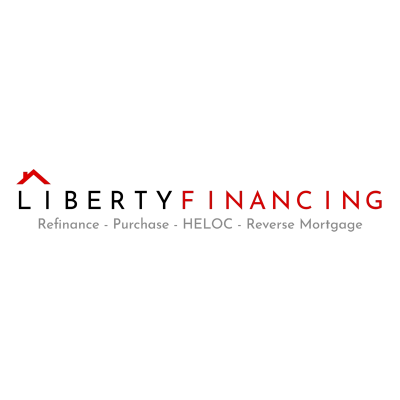What Are Unexpected Costs of Starting a Business?
Embarking on an entrepreneurial journey brings its share of financial surprises, but this article demystifies the unexpected costs of starting a business. Drawing on the knowledge of seasoned professionals, it offers strategic advice to navigate the financial hurdles that new business owners often overlook. Dive into expert insights that equip entrepreneurs with the foresight to budget wisely and avoid common pitfalls.
- Invest in Quality Tools for Long-Term Success
- Navigate Payment Processing Fees Strategically
- Budget for Compliance and Licensing Early
- Prepare for Unexpected Insurance Costs
- Adapt Marketing Strategies to Control Expenses
- Conduct Regular Subscription Audits to Cut Costs
- Streamline Your Tech Stack for Efficiency
- Plan for Sustained Cash Flow Challenges
- Seek Expert Guidance for Insurance Credentialing
- Build a Financial Buffer for Unforeseen Expenses
Invest in Quality Tools for Long-Term Success
One unexpected cost I encountered when starting Ozzie Mowing & Gardening was the high price of quality tools and equipment. I initially thought I could get by with mid-range tools, but after a few jobs, I realized that durability and efficiency mattered more than I anticipated. Cheap tools broke down quickly, costing me both time and money in repairs and replacements. As a certified horticulturist with over 15 years of experience, I knew that having the right tools could make or break the quality of service I provided. So instead of cutting corners, I invested in professional-grade equipment from the start. While it was a significant upfront cost, it paid off in the long run by improving efficiency, reducing downtime, and ensuring I could deliver top-tier results to my clients.
My experience and qualifications helped me turn this challenge into a positive outcome by allowing me to choose the right tools for the job rather than learning through trial and error. Understanding the specific needs of different plants, soil types, and landscaping projects meant I could make informed decisions on what equipment was truly necessary. For example, I invested in a commercial-grade mower that not only lasted years longer than a basic one but also delivered a cleaner cut, leading to healthier lawns for my clients. This level of expertise also meant I could justify higher pricing based on the quality of work, helping me recoup my investment faster. In the end, prioritizing quality equipment set my business apart and reinforced my reputation for reliability and excellence.
Navigate Payment Processing Fees Strategically
One unexpected cost I encountered when starting my business was payment processing fees. Initially, I assumed transaction fees were negligible, but as sales grew, those small percentages quickly added up. Between credit card processing fees, platform transaction fees, and chargeback costs, it became a significant expense that I hadn't fully accounted for in my pricing model.
To manage this, I took a multi-pronged approach. First, I negotiated better rates with my payment processor. Many providers have tiered pricing structures, and by demonstrating consistent transaction volume, I was able to secure a lower fee per transaction. Second, I added alternative payment options like ACH transfers and direct invoicing for larger clients, which reduced our reliance on high-fee credit card payments. Finally, I built those costs into our pricing strategy--not by simply increasing prices, but by ensuring our margins were healthy enough to absorb them without impacting competitiveness.
For any small business owner, my advice is to analyze every transaction fee early and explore ways to minimize them. Even small percentage points can translate to thousands of dollars in the long run. Look at your contracts, negotiate where possible, and consider alternative payment methods to protect your bottom line.

Budget for Compliance and Licensing Early
One unexpected cost I encountered when starting Liberty Financing was the expense of compliance and licensing. I knew there would be some costs, but the total price of obtaining the necessary state and federal mortgage licenses, renewing them annually, and ensuring we met all regulatory requirements added up quickly!
To manage this, I prioritized budgeting for compliance early on and took a phased approach to expansion. Instead of trying to get licensed in multiple states at once, I focused on key markets first and reinvested revenue as growth happened. I also streamlined processes by using technology to track renewals and requirements, preventing costly last-minute filings! Always overestimate regulatory costs and build compliance into your business plan from day one.

Prepare for Unexpected Insurance Costs
Starting a business comes with many expected costs, but insurance can be one surprise. It's easy to overlook until you realize it's not just about paying premiums; it impacts your cash flow and forces you to reprioritize. I learned this the hard way, having to dig deep into what coverage I actually needed, and how to avoid overspending. This hidden cost is like how supply chain disruptions affect local prices. When something happens overseas like shipping delays, it can increase the cost of your supplies, hitting your bottom line. You can't always predict these things, but you can prepare. Unexpected costs will come up, but being flexible, planning ahead, and staying informed can help you handle them without derailing your business. Keep your focus on resilience, and you'll be ready for whatever comes your way.

Adapt Marketing Strategies to Control Expenses
One unexpected cost I encountered when starting my business was higher-than-anticipated marketing expenses. I initially thought a small budget for ads and direct mail would be enough, but generating quality leads required more investment than expected.
To manage it, I shifted focus to cost-effective marketing strategies, such as leveraging organic social media, networking, and refining direct mail targeting to improve response rates. I also tracked ROI closely, cutting underperforming campaigns and reinvesting in the strategies that worked best.
The key takeaway is to budget for marketing realistically and be flexible in adjusting strategies. Generating leads takes testing and refinement, so being adaptable is essential to keeping costs under control while growing a business.
Conduct Regular Subscription Audits to Cut Costs
Our SaaS subscriptions ballooned to $14k/month after just 18 months in business. Nobody saw it coming! We did a brutal 2-hour review and cut everything we hadn't used in 30 days. We dropped to $6k overnight without losing any critical functionality. Now we do quarterly "subscription audits" and require new tools to replace existing ones, not add to the pile.

Streamline Your Tech Stack for Efficiency
One unexpected cost was the cumulative expense of essential business software--accounting (QuickBooks), email marketing (Mailchimp), project management (Asana), and more. These add up fast! We've learned to streamline our tech stack, recently dropping Zoom in favor of Google Meet, which was already included in our Google Workspace plan.

Plan for Sustained Cash Flow Challenges
One unexpected challenge I faced as a new entrepreneur was realizing just how much money it takes not just to launch a business, but to sustain it. I went in with the belief that passion, hard work, and determination would be enough to carry me through, but the reality is that cash flow is king. Without proper financial planning, even the best ideas can fail. I quickly learned that expenses always exceed initial projections, whether it's operational costs, marketing, employee salaries, or unexpected setbacks, there's always something demanding more resources than anticipated. There were times when I had to make tough financial decisions, including delaying my own paycheck just to ensure payroll was met for my team. It's a harsh reality that many new entrepreneurs don't anticipate: the responsibility of keeping the business afloat often falls entirely on your shoulders. Running a business isn't just about making money, it's about managing money wisely.
My advice? Be brutally honest about your financial needs from day one. It's easy to underestimate how long it will take before revenue stabilizes, so plan for the long haul. Build a financial cushion, have at least six months of operating expenses saved up if possible, and always budget conservatively. Expect the unexpected, and don't assume early profits will cover future expenses. Beyond that, always have a backup plan, whether it's alternative funding sources, cutting unnecessary expenses, or a strategy for increasing cash flow. The best entrepreneurs aren't just visionaries, they're pragmatic financial planners who ensure their business can survive the inevitable ups and downs.

Seek Expert Guidance for Insurance Credentialing
When we started our healthcare company, we underestimated how long the insurance credentialing process would take. As a result, we began seeing patients before we were able to receive reimbursements. Ultimately, we hired an insurance credentialing expert to expedite the process and help us get on insurance panels more quickly. This experience taught us the importance of seeking expert guidance and professional networking!

Build a Financial Buffer for Unforeseen Expenses
I knew there would be legal and administrative costs associated with starting Spencer James Group, but I didn't fully anticipate how substantial they would be. These included business registration and licensing fees, attorney costs for contract reviews, expenses for setting up data privacy safeguards, and the initial cost of obtaining business insurance. While each individual expense wasn't large, the sheer number of necessary expenditures added up quickly, making the total cost significantly higher than I had expected.
Although I hadn't planned for all of these specific costs, I anticipated that unforeseen expenses would arise as a new business owner. To account for this, I built a financial buffer into my startup budget, which allowed me to cover these unplanned but necessary expenses without disrupting operations.
I strongly advise new business founders to do the same. When estimating startup costs, add a 10-15% buffer to cover necessary but often overlooked expenses. This extra financial cushion ensures you can handle unexpected costs without putting your business in a difficult financial position from the outset.




